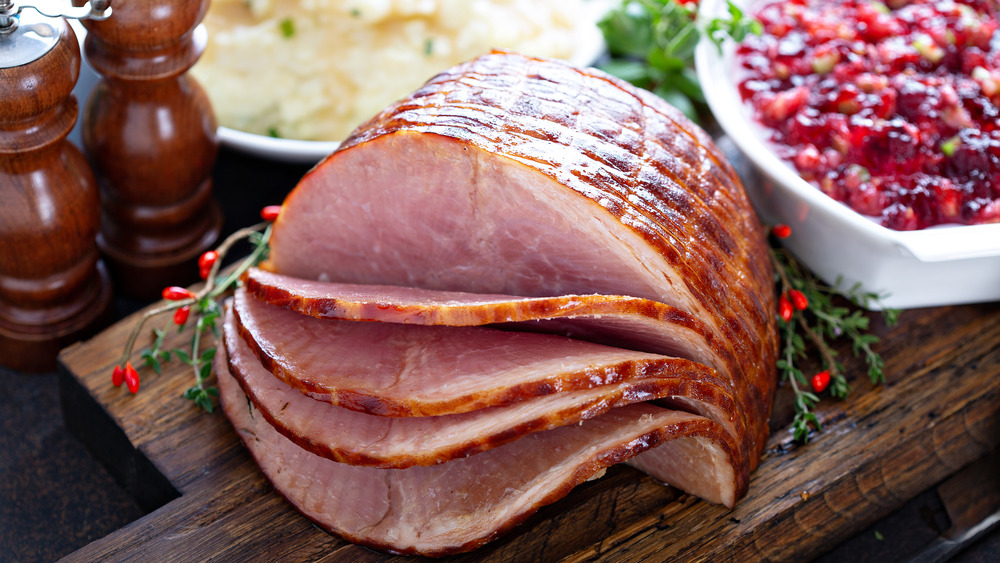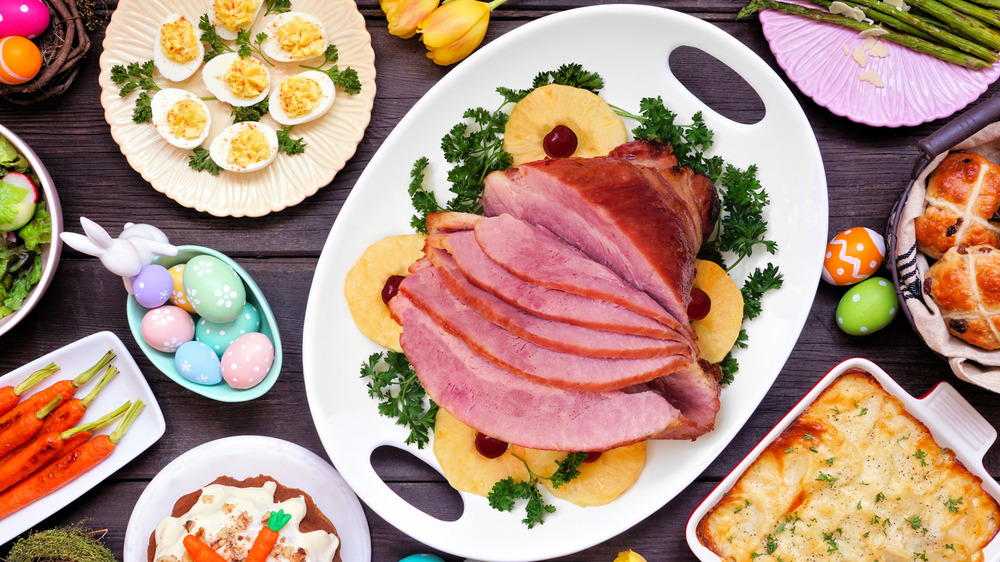What To Look For When Buying A Ham
With Easter coming up quickly, the time has come to start shopping for every item that we want to include on our holiday menu. To that end, nothing rounds out a festive table spread like a classic ham, but this hasn't always been the case. According to The Daily Meal, we used to primarily enjoy lamb on Easter, but due to the dwindling amount of available mutton by World War II, Americans had to find a different meat source for our celebrations. Due to a cheaper price and wide variety of available recipes, we turned to ham as a natural stand-in and never looked back.
While ham proves easier to come by than lamb, we still have our work cut out for us if we decide to go all in and whip up this classic dish this coming weekend. First, we first have to decide what kind of ham we want. According to Recipe Tips, deciding on a whole ham, butt end, shank end, or center slice determines how much meat we actually buy. Flavor and texture plays an integral role in the selection process, too. And trying to decide between a fresh, dry-cured, or wet-cured cut can influence how the piece of meat gets cooked. With so many options available, picking the right style of ham feels like a shot in the dark, but luckily, we can look to a few guidelines to help us whip up the perfect Easter entrée.
How to cook the perfect ham
With Easter on the line and a family to please, don't skimp out on your ham. According to The Sacramento Bee, a solid ham should run between $40 and $50, meaning that if you find a super cheap deal, the piece of meat probably has extra water added to increase its weight. Also strive to find a bone-in ham, as these options taste better due to a slightly higher fat count. When in doubt, skip any kind of glaze. Fruit, like pineapple or cherries, can do wonders for a ham and bring out the natural flavor of the cut much more than a honey glaze ever could.
Once you've selected your ham, you still have a ways to go. The cooking process can make or break your cut of pork, and using too high of an oven temperature guarantees you'll dry out your meat. For a cured ham, go low and slow at a temperature between 160 and 170 degrees to draw out moisture. Make sure to cover the ham with some foil while it bakes, and whatever happens, don't try to smoke a cured ham.
With your Easter meal riding on the success of a perfect ham, make sure to follow each tip for a surefire success during the holiday. With a bit of patience and some knowhow, the perfect ham centerpiece is just within reach.

